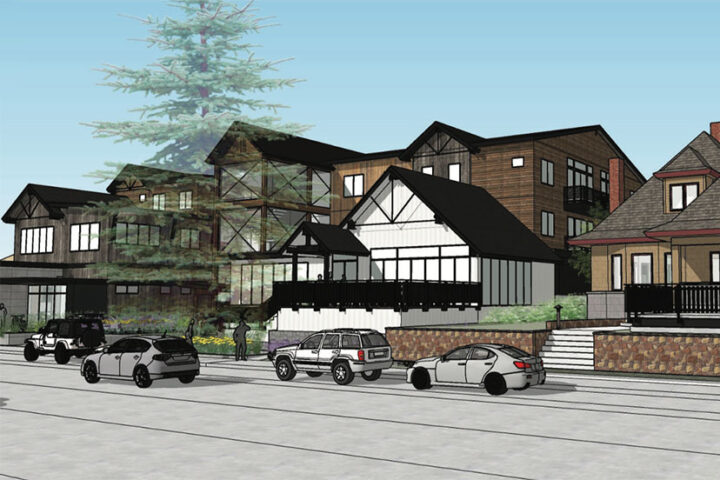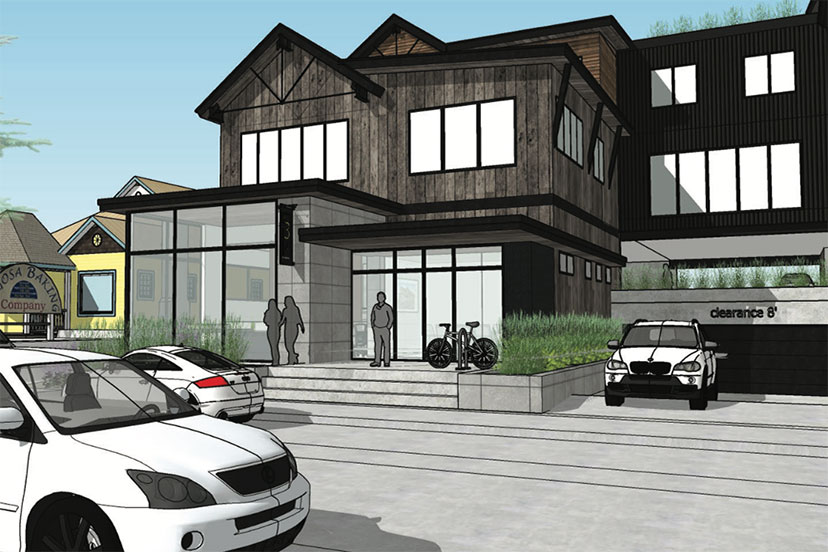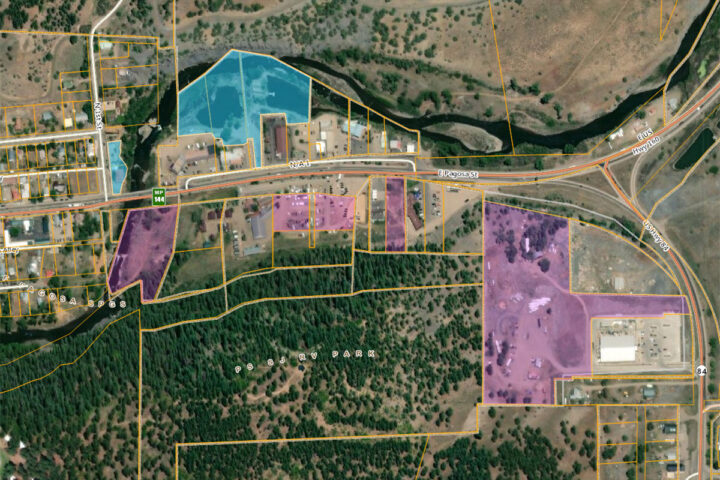The United States is utterly dependent on private cars. Every day, American cities are clogged with cars of suburbanites commuting into business districts and back out to suburbs. During the workday, cars in cities must be stored in downtown parking lots and parking garages. And because of the volume and dimensions of all the cars attempting to park, parking lots must consume enormous amounts of land in our cities…
…Enormous amounts of land must be dedicated to parking cars rather than to serving people. It is taken as a matter of course these days that the land dedicated to many of the facilities people actually use (restaurants, offices, grocery stores, etc.), will be dwarfed by the parking lots those facilities must provide to support America’s automobile addiction. If we didn’t have to provide these parking lots, more space throughout our cities could be dedicated to the facilities we actually use.
—from ‘Life After Parking’ by Alexander Dukes on StrongTowns.org, August 2019.
The Town Council has scheduled a surprise meeting for this evening, Monday, February 27, at 5pm… and it appears their intention is to go into ‘executive session’ (public not allowed) to discuss the possible purchase of various vacant lots at the east end of town.
EXECUTIVE SESSION
1. Possible Executive Session Pursuant to CRS 24-6-402(4)(a) Concerning the Purchase, Acquisition or Lease of the Following Parcels:
- Parcel # 570118304043, X. E. Pagosa Street (no assigned address)
- Parcel # 570118305001, 225 E. Pagosa Street
- Parcel # 570118305002 and Parcel # 570118305003, 275 E. Hwy 160/Pagosa Street
- Parcel # 570118117001, 351 E. Hwy 160/Pagosa Street
- Parcel # 570118306001, 229 US Hwy 84 #A
Here’s a map of the properties that will be discussed (behind closed doors, for some reason?) You can click the map for a larger view.
We are looking at the ‘East End’ between First Street and the Hwy 169/Hwy 84 intersection, and between the San Juan River and Reservoir Hill Park. The five pink parcels are theoretically ‘for sale’, although we (the public) have not been told the asking prices. (The four blue parcels are already owned by the Town government.)
This surprise meeting is related to a recently-adopted ‘plan’ for the East End. That plan suggests the need for more vehicle parking, but does not specify who should pay for the additional parking lot. The surrounding businesses that will presumably benefit? Or the taxpayers?
A couple of years ago, the Town government, in its wisdom, began leasing a one-acre parking lot across the street from the Bell Tower, to help solve a perceived “parking problem” at the west end of downtown. That lot has consistently remained almost entirely devoid of cars, except maybe during a couple of weeks in July, and during special events.
But let’s get back to our discussion about 232 Pagosa Street.
After approving a ‘Density Bonus Policy’ in 2021 to encourage the construction of housing for working families, five of the seven Town Council members, earlier this month, rejected a proposal by the developers of the proposed 232 Pagosa Street mixed-use development — 43,000 square feet of businesses, upscale residential, and parking garages. The developers were offering to create a deed-restricted 800-square-foot studio apartment, down the street, for the privilege of building an additional 1,850-square-foot condo unit in their new building at 232.
The Town’s Land Use and Development Code allows only seven dwelling units in the proposed building, based upon the size of the parcel. The potential developers — Reynolds Ash & Associates and Dirty Rose LLC — want to include an eighth luxury unit.
Architect Brad Ash defended the proposal at the February 7 public hearing, indicating that he would rent the 800-square-foot studio apartment to one of his employees.
Here are a couple of comments made by Mr. Ash, during that February 7 ‘public hearing’.
“Mayor, we hear your concerns about size and so forth. We could say that the [smaller studio apartment] could play a part of it, but I can build seven units of higher-end square footage and have one less workforce housing opportunity in Pagosa.
“I commend Town Council for putting together these ordinances, such as Ordinance 966. Because watching Town Council and the Town of Pagosa Springs struggle, as developers, to get a workforce housing project off the ground, kind of gives you guys some perspective of what we deal with as developers, daily…”
Mr. Ash’s reference to the Town “struggling” with workforce housing refers to a much-delayed ‘Public Private Partnership’ with Dallas developers Servitas LLC to build maybe 70 housing units… someday.
Ordinance 966 allows developers to build additional dwelling units on a parcel, if 25% of the units are deed-restricted to serve households making less than 120% Area Median Income (AMI). There are many reasons why Pagosa, like many Colorado resort communities, is struggling with a housing crisis. But we are not currently struggling with a parking problem, even though we all drive our cars.
When the once-residential neighborhood now known as the East Village was platted in 1883, the plat was based on vague plans to build a federal convalescent hospital near the Pagosa Hot Springs to serve Civil War veterans. No one had any concerns about “parking” in 1883. America’s concern about parking blossomed slowly during the last half of the 20th century, as American communities hitched their wagons (so to speak) to automobile-centric suburban development patterns. (With encouragement from the automotive and oil & gas industries?) It wasn’t until the late 1990s that the Town of Pagosa Springs started adding “parking” mandates to the LUDC.
Parking lots are not cheap. First, you have to buy enough land to accommodate the building and the parking lot. Then you have to build and maintain a lot that is never full (because you built it big enough for the Fourth of July tourist crush.) Unlike office spaces and retail spaces and living spaces, parking lots do not generate direct income. You could easily classify parking lots as a ‘drain’ on the economy. (And many urban planner classify them exactly that way.) But towns governments typically require developers to provide parking.
The requirement that developments provide parking for their customers and tenants is one of the reasons only relatively wealthy developers can afford to build within the Town of Pagosa Springs.
A couple of years ago, the Town of Pagosa Springs eliminated parking requirements for most of the downtown core. The Planning Commission and the Town Council finally agreed that parking requirements had resulted in a downtown where very few could afford to build anything new.
But the designers of 232 Pagosa Street building included 18,000 square feet of parking garages in their 43,500 square foot proposal. According to my pocket calculator, about 40% of the building is dedicated to parking.

No wonder it’s so relatively massive.


